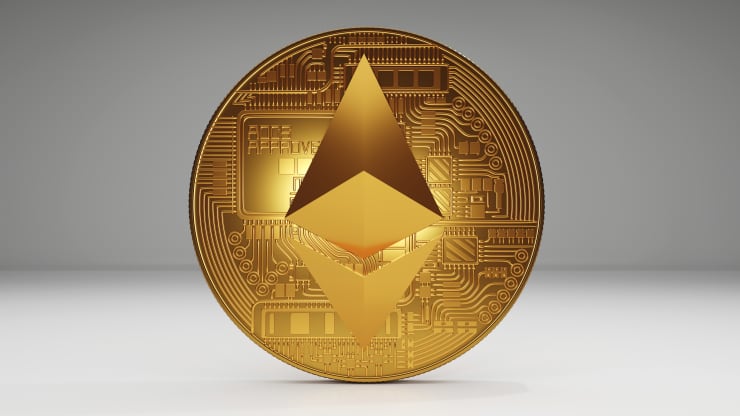
Bitcoin isn’t the only cryptocurrency breaking records this month.
On Friday, the value of a single ether token hit an all-time high of $4,461.96, bringing the second-most valuable digital token’s market cap above $520 billion.
If you bought ether a year ago, you’ve enjoyed very strong gains over the past 12 months. A $1,000 ether purchase on Oct. 29, 2020 — at a price of $382.82, according to crypto exchange Coinbase — would have gotten you 2.61 coins. At Friday’s peak, those coins would be worth $11,645.71, representing an increase of more than 1,000%.
That return is more than three times better than bitcoin, where a $1,000 purchase a year ago would be worth around $4,476 today.
Over the same time frame, the S&P 500 rose 38.8%, a small increase in comparison to either digital coin. But unlike cryptocurrencies, which are known for their volatility, the S&P 500 is a considered a relatively reliable investment, with a decades-long track record of providing returns for investors.
Ether’s rally followed an important upgrade to the Ethereum network on Wednesday. The upgrade, dubbed Altair, is one part of the integration toward Ethereum 2.0, or Eth2, where the network’s infrastructure will change. Once Eth2 is live in 2022, Ethereum mining will become obsolete.
Currently, Ethereum operates on an extremely energy-intensive proof of work (PoW) model, where miners must compete to solve complex puzzles in order to validate transactions. Altair matters because it tested Ethereum’s ability to shift to a proof of stake (PoS) model, where users will validate transactions according to how many coins they hold.
Eth2′s goal is to make Ethereum more scalable, secure and sustainable. You can read more about the move’s potential impact here.
When it comes to crypto, remember that past performance is no guarantee of future returns. Experts say you shouldn’t put more money into cryptocurrencies than you’re comfortable losing.
If you decide to get into crypto, consider using dollar-cost averaging to spread out your purchases into small pieces over time, instead of making a large purchase all at once.
























